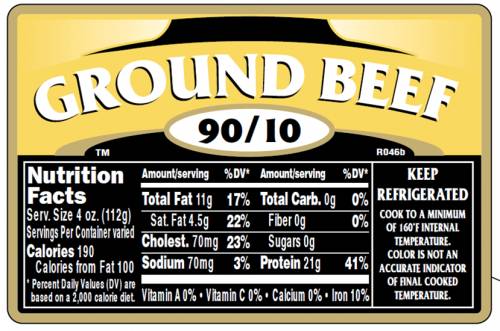A slice of ‘rustic’ bread with more salt than a pack of
crisps? A ‘natural’ smoothie that sends your sugar levels sky-high? To be truly
label-savvy, you need to read between the lines says Beth Gibbons
‘Nutrition labels often quote tiny
portion sizes. whos’s going to stop at a quarter of a pizza’?

You’re standing in the bakery aisle wondering what loaf of
bread to buy. You’re hungry and in a rush. You want to make the healthiest
choice possible, but don’t have time to scour the ingredients of all the
hundreds of products in front of you. So what do you go for? A bog-standard wholemeal
loaf? Or the shop’s own-brand ‘best’ range, which appears to be bursting with
seeds and has a bowl of grains pictured on the front? Oh, and the word
‘farmhouse’ plastered across the packaging. The latter wins hands down,
obviously – but so do the savvy marketers. Never mind that the own-brand loaf
is more expensive, contains twice the fat and calories in every slice of the
wholemeal loaf – and, ironically, isn’t even wholegrain.
New label
laws
An impressive 59% of us pride ourselves on always checking
labels, according to a recent Which? Report, but how many actually sift
through the small print to discover this level of detail? Even when we do, the
information on the side of that sandwich or smoothie packaging can be confusing
and, at times, downright misleading.
The European Parliament agrees, which is why food-labeling
regulations are changing later this year. First up, nutritional labeling will
become mandatory across Europe. Oh, and that small print won’t be quite so
small, either, with strict font-size restrictions on all labels. This is an
extremely important step forward for consumers, according to Victoria Taylor,
dietitian for the British Heart Foundation (bhf.org.uk). ‘With one in four of us
clinically obese, giving consumers all the information they need to make
healthy eating choices is absolutely crucial,’ she explains.
Which? Executive director Richard Lloyd feels the
move should have gone further, however. ‘It’s disappointing that comprehensive
front-of-back nutrition labeling, including traffic-light colour-coding, hasn’t
been made compulsory, because that’s what works best for consumers,’ he says.
The traffic light system – where red, amber and green
colour-coding is used on the front of packs – was developed by the Food
Standards Agency to help consumers tell at a glance if food is high, medium or
low in fat, sugars and salt. Sainsbury’s, Waitrose, Asda and Marks &
Spencer have all adopted the system, while Tesco and Morrisons controversially
rejected it in favour of their own labeling. Along with a number of huge food
manufacturing companies, they instead use guideline daily amount (GDA) schemes,
which give you a rough idea of what percentage of your daily limit of calories,
sugar, fat, saturates and salt a certain portion provides. Marketing guru
Hamish Pringle (23red.com) isn’t in the least surprised: ‘Most foods, when
consumed in moderation or as part of a balanced diet, are perfectly fine,’ he
says. ‘This why manufacturers, and indeed the Food and Drink Federation, are
much keener on the long-established GDAs. It puts the onus on the customer to
make their own judgement.’
Shop
Smarter
Zoe Harcombe, author of The Obesity Epidemic (Columbus,
$30) believes this is simply a cynical ploy. ‘GDAs are so open to abuse,
they’re totally meaningless,’ she argues. ‘Manufactures are able to put the GDA
on for a ridiculously small portion size. Take a large pack of crisps. They’ll
quote calorie values for a 30g portion and say it’s only 8% of your day’s
calorie allowance. The reality is the average person is more likely to demolish
half the bag, which is quite a different story. It’s the same with pizza
portions – who stops at a quarter? Plus, people often read the quoted portions
as target to hit, rather than limits not exceed.’
Victoria agrees that we need to be vigilant when checking
food labels. ‘Always look at the “per 100g” value rather than a unrealistic
portion amount.’ She says. ‘And remember, calories aren’t the only thing you
should be checking. The saturated fat, sugar and salt content are also all
extremely important when it comes to your health.’
Take that rustic loaf, for example. A recent study by
Consensus on Salt and Health revealed that more than one in four loaves of
bread contain more salt per slice than a standard packet of salted crisps
(0.5g). Indeed, bread is the largest contributor of salt to our diet. ‘Food
manufacturers often list sodium values rather than salt, which confuses the
issue,’ says Victoria. ‘To convert the amount of sodium into the salt content,
you multiply the value on the label by 2.5.’ But not many people know this –
and should we really need to carry a calculator with us to tell if a food is
bad news for our health?
Sugar values can be equally confusing. ‘You’ll find
this in
the carbohydrate breakdown under the words “of which sugars”,’ explains
Victoria. ‘Naturally-occurring sugars such as fructose aren’t such a big
deal; it’s the
added ones like sucrose you need to watch out for. Two fruit juices
might have
an identical sugar content, but one might be the natural juice
containing only
fructose, while the other might be made from a concentrate with added
sugars
and water.’ Scour the ingredients list for any of the following
tell-tale
signs: sucrose, glucose, maltose, palm sugar, hydrolysed starch, syrup
and
invert sugar. The higher up the list, the more there is.